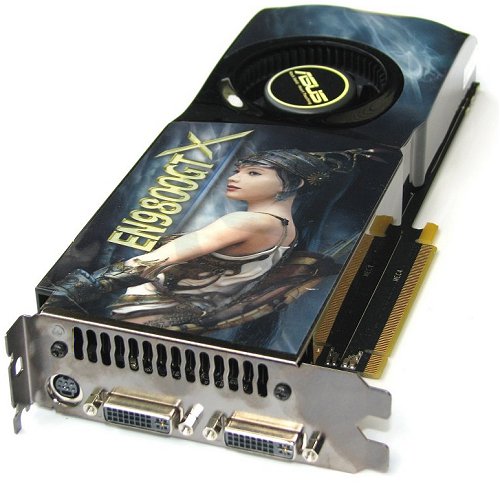Just last week we brought you a review on the GeForce 9800 GX2, and today we have a new ASUS board in our test labs. Powered by the GeForce 9800 GTX chip, we put the brand new chip to the test.
Today will see the official launch of the GeForce 9800 GTX as the third member of the GeForce 9 series. Already we have seen the GeForce 9600 GT performing in the mainstream sector, the 9800 GX2 aimed at the high-end $500+ market, and now the 9800 GTX which sits right in-between. There is also a GeForce 9800 GTS on the way, but we will leave that for another occasion.
But first things first, and without getting fooled by naming conventions, you should know that Nvidia has not gone back to the drawing board with the new GeForce 9 series, meaning that without delving too deep you can find that the GeForce 9 is still based on the same GeForce 8 architecture. We believe Nvidia has done this for two reasons: First, they successfully proved with the GeForce 9800 GX2 that a lot of power was still left untapped. The very expensive dual-GPU card recently demonstrated that it has more than enough power to churn through the latest and most demanding gaming titles. Furthermore, with little pressure from ATI in the high performance segment, Nvidia has been able to reclaim their title without having to develop an entirely new architecture.

The other reason has to do with money, and as any successful business Nvidia has got its own selfish motivations. Given that the original GeForce 8 series cost them something in the range of $400 million dollars to develop, the graphics giant sure is trying to juice it for every last penny possible. Nvidia has effectively kept the G80 architecture alive by shrinking it down from 90nm to 65nm to improve efficiency.
Based on the infamous G92 architecture that we have seen used time and time again, the GeForce 9800 GTX shares very similar specifications to that of the GeForce 8800 GTS 512 graphics card. By now, the G92 has been used on numerous Nvidia graphics cards including the GeForce 8800 GS, 8800 GT, 8800 GTS 512, and the 9800 GX2. Keeping this in mind, it will be interesting to see what makes the new GeForce 9800 GX2 special.
The GeForce 9800 GTX is meant to replace the old 8800 GTX, which is no longer in production as it was rendered impractical by the 8800 GTS 512, which offers similar performance at a fraction of the cost. The new 9800 GTX is said to begin retailing in the $300 to $349 price range, which would place it in a league of its own as there are currently no ATI or Nvidia graphics cards competing there.
The specifications of the GeForce 9800 GTX and the 8800 GTS 512 are indeed very similar, though a feature that is unique to the 9800 GTX is 3-way SLI. As you may have read in our previous reviews, we are not really that excited by SLI (or Crossfire) as we are for truly competent single card solutions. After all, it is likely that you would end up spending well over $1000 for this kind of setup with the 9800 GTX, and the performance scaling is questionable.
ASUS provided us with their version of the GeForce 9800 GTX which is the one going out on retail although for the most part it is built closely to match Nvidia's reference design. Let's move on to check this new graphics card out in more detail...